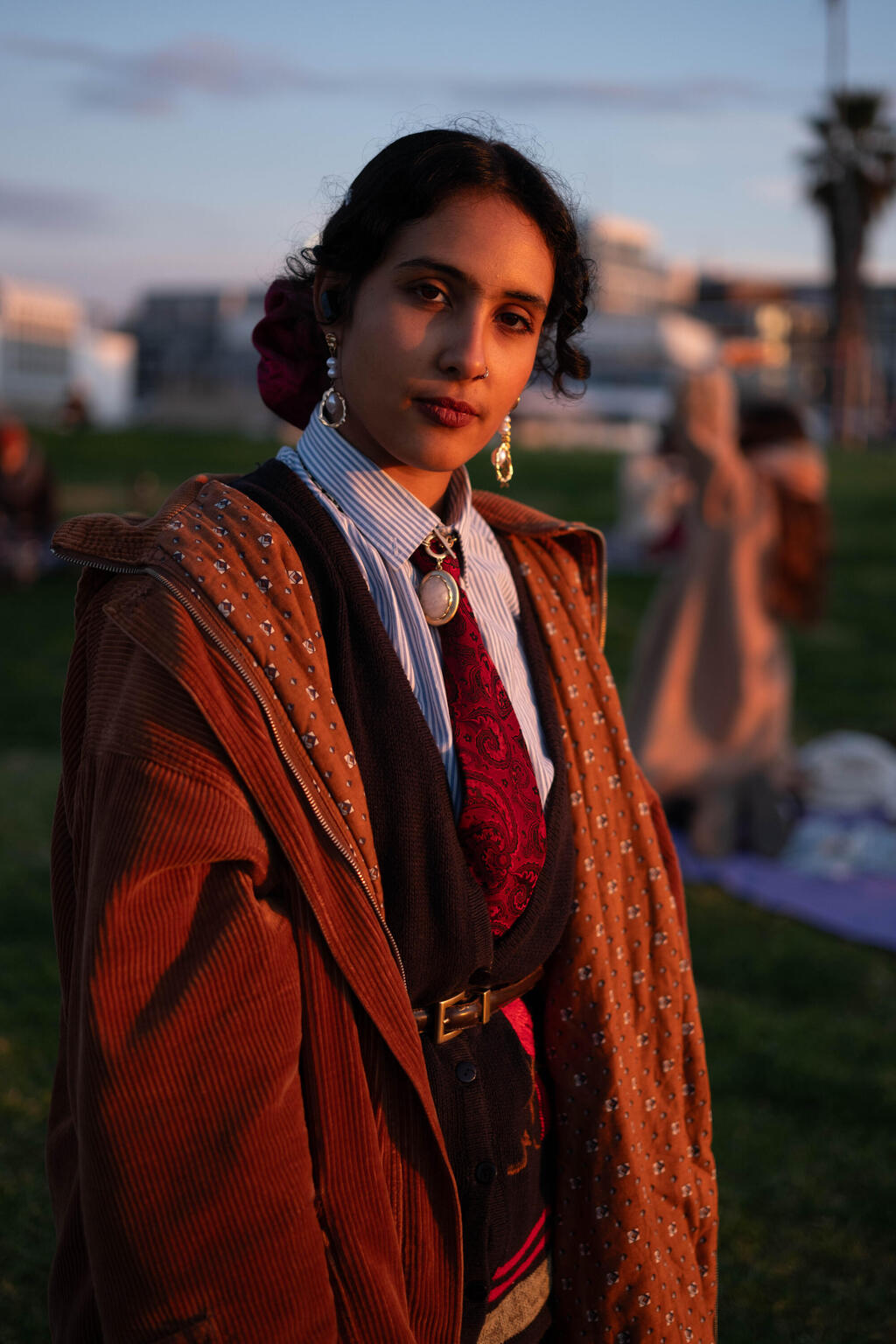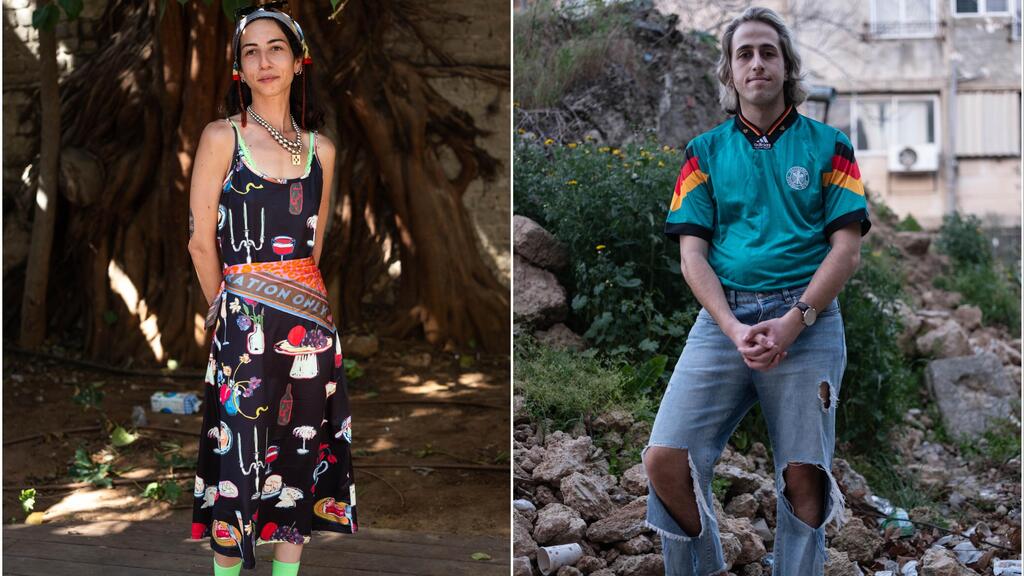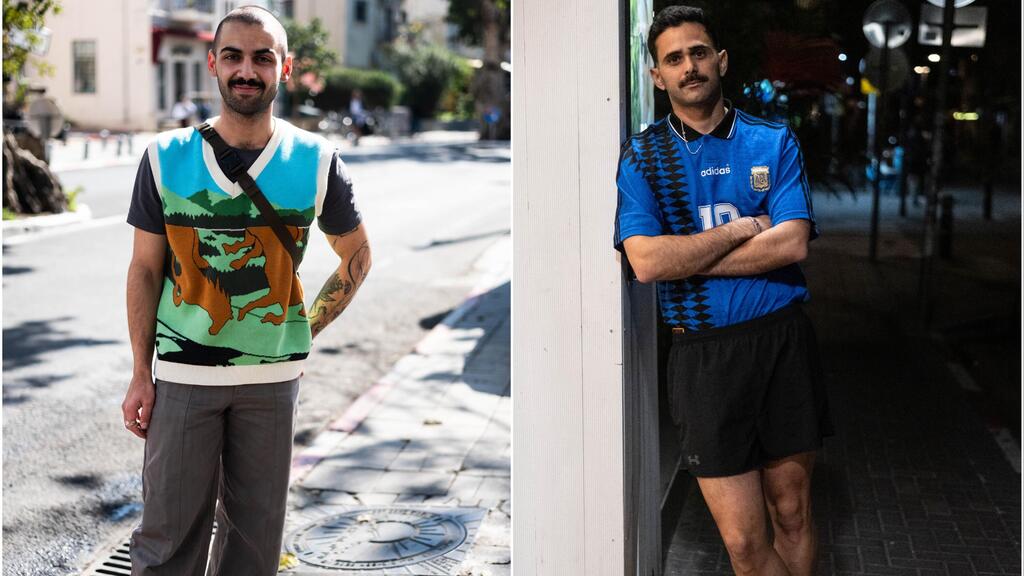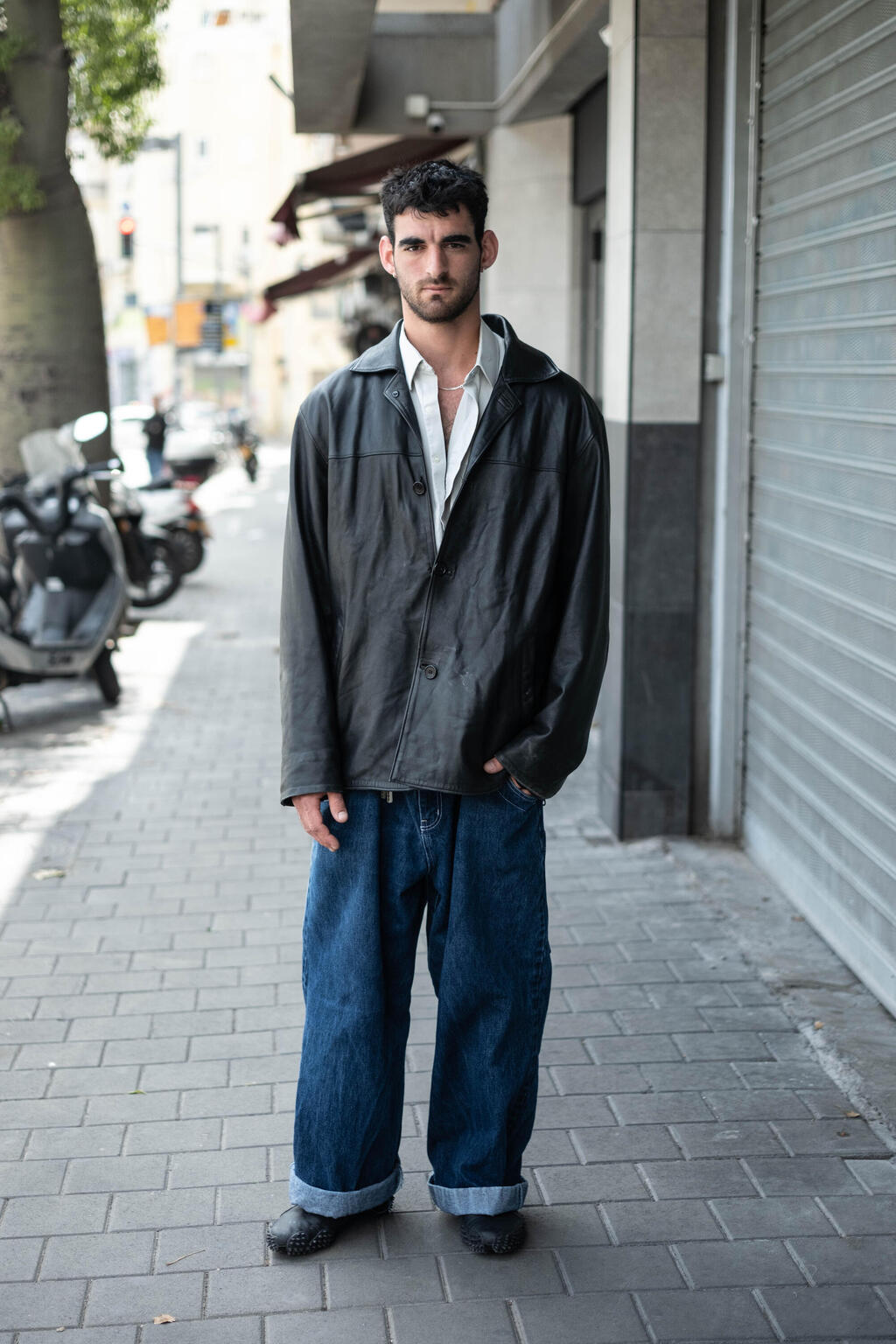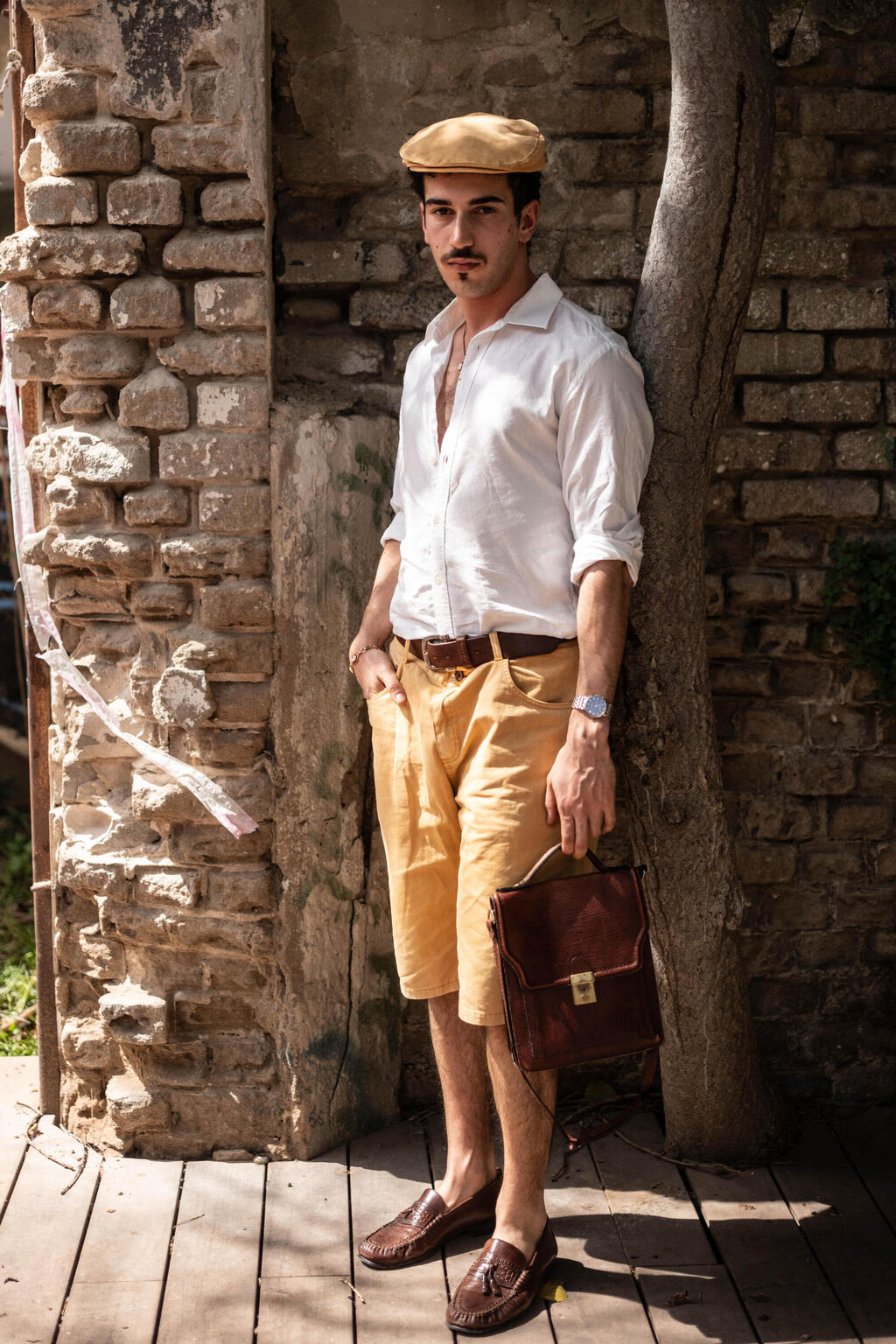Over the past two decades, street fashion photography has evolved from a niche feature buried in newspaper sidebars into a global phenomenon. Where photographers once hunted for spontaneous style on the streets, today’s subjects increasingly dress to be seen — and photographed.
The aesthetic was quickly adopted by fashion brands aiming to present a more relatable, candid image. But what started as documentation of personal, often subversive style has been diluted by influencers posing in designer outfits, staging casual glances and curated “walk-bys” that strip the genre of its original authenticity.
This shift is exactly what makes Adar Yosef’s work stand out. In contrast to the polish and posturing of mainstream fashion, Yosef presents an unfiltered, honest view of his subjects—most of whom he has photographed over the past two months in Tel Aviv’s Neve Sha’anan neighborhood, where he lives. For him, geography is more than backdrop; it’s part of the statement.
6 View gallery
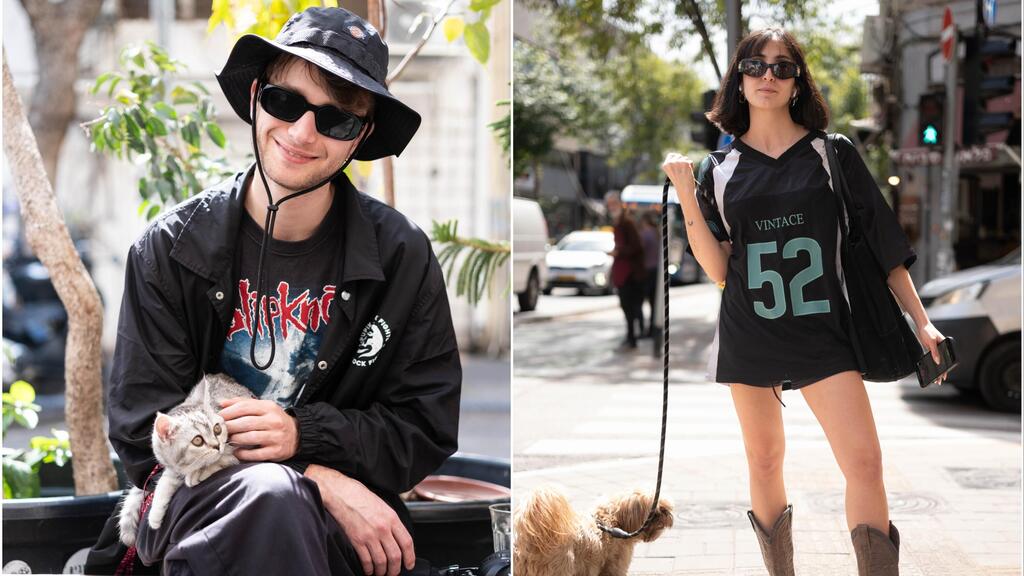

מימין: צאלי הראל, צלמת, בת 25, מתל אביב | ניראה שטיין, סטודנט למדעי המדינה, בן 26, מתל אביב
(צילום: אדר יוסף)
“The city’s south is the last refuge for young people who’ve been priced out of the center by real estate sharks building high-rises,” he said. “And youth fashion, as we’ve seen before, is what drives the entire industry.”
Get the Ynetnews app on your smartphone: Google Play: https://bit.ly/4eJ37pE | Apple App Store: https://bit.ly/3ZL7iNv
Yosef, 59, has been shooting for nearly 40 years. His work has appeared in Tate Modern, Milan’s Fondazione Prada and on PhotoVogue. He’s also the son of the late playwright Josef Mundy. For him, Tel Aviv isn’t just a setting — it’s a natural stage.
“I’ve been shooting people in the street for years. I love the spontaneity and the brief connection with my subjects — a quick direction, a few takes and I move on,” Yosef told Ynet. “The first thing I notice is a person’s presence. Clothing matters too but in the end it’s the full picture: the subject, the outfit, the composition and the location.”
In the photos accompanying the article, Yosef maintains a visual balance between individuals with unique presence and personal style. He shoots with a FUJI XH-2 and processes the images for a cinematic quality.
One standout subject is Hodaya Ofri, a 22-year-old dancer and singer from Tel Aviv, wearing a corduroy jacket with a colorful lining, a striped shirt and a paisley tie. Her silver jewelry and pinned-up hair give her a vintage, almost 1930s look. “There’s something very local and traditional about her — like a woman pulled from a photo taken in the '30s,” Yosef said.
Another striking portrait is of Gal Malka, a 23-year-old cook, also from Tel Aviv. He wears loose-fitting jeans and a vintage-style leather jacket. His strong facial features dominate the frame.
“Most people today dress along the same lines, influenced by trends and social media,” Yosef noted. “I’m interested in personal style — something that pushes back against the uniformity of the street.”
As for the ongoing war, Yosef said it has little visible impact on the way young people dress. “People live in Israel but they’re not really in Israel — they exist in several places at once: the global village, social media,” he said.
“When you look at these photos, they don’t look like they were taken in wartime. There’s no grayness or gloom. The internet lets us escape elsewhere and life goes on.”


